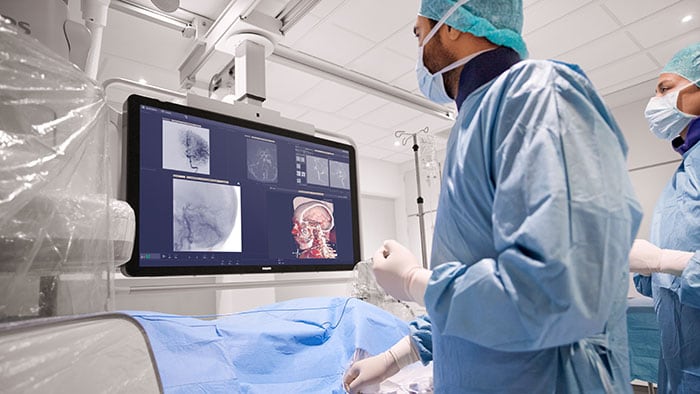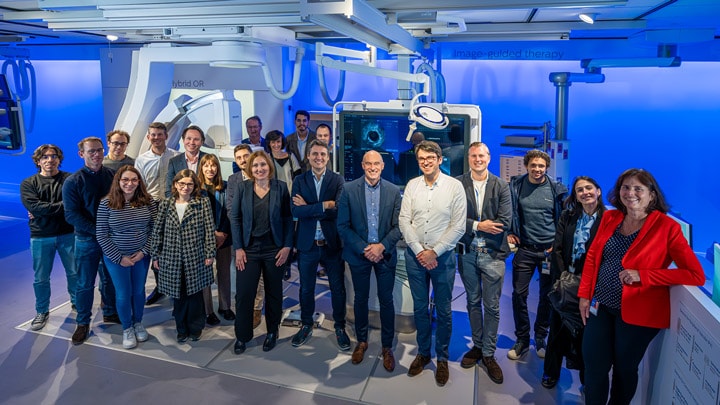Approximately 1.9 million stillbirths – babies born with no sign of life at 28 weeks of pregnancy or later – occurred worldwide in 2021. According to the latest data, 1 in 72 total births globally resulted in a stillborn baby, or one every 17 seconds [1]. Additionally, an estimated 240,000 newborns worldwide die within 28 days of birth every year due to congenital disorders [2], while annually, 3%-6% of infants globally are born with a serious birth defect [3]. Birth defects are a leading cause of death for infants and young children globally, and those who survive and live with these conditions are at increased risk for lifelong disabilities. The critical goal is to detect – as early as possible – any chromosomal, congenital or growth abnormalities that can lead to long-term health issues or other adverse outcomes. In gynecological care, early detection and diagnostic confidence are essential to a woman’s wellbeing.
“Philips is a leader in providing innovative OB/GYN advanced visualization tools specifically designed to aid in efficient routine screening and care and to assist clinicians in detecting abnormalities early,” said Matthijs Groot Wassink, General Manager of Access and OB Ultrasound at Philips. “We’ve built intelligently guided workflows and ways for clinicians to efficiently collaborate across specialties for more confident diagnoses at more points of care, supporting women with the peace of mind they deserve during every stage of their health journey. Our full range of AI-enabled ultrasound imaging solutions allows doctors to deliver excellence in care – from clinics and hospitals to emergency and rural or remote settings worldwide.”

For more than 30 years, Philips has partnered with physicians to deliver advanced obstetrics and gynecology ultrasound solutions designed to bring peace of mind to patients by providing more information, earlier in a pregnancy, while making it easier for clinicians to make a confident diagnosis. Currently, Philips Ultrasound systems installed around the world perform an estimated 170 million OB/GYN procedures each year.
At the International Society in Obstetrics and Gynecology (ISUOG, Seoul, South Korea, Oct. 16-19) World Congress, Philips will highlight its latest innovations in OB/GYN Ultrasound to help identify potential issues earlier to enhance more confident decision-making and definitive diagnosis. Attendees will experience Philips’ latest advancements in OB/GYN Ultrasound to help manage staff shortages, expand quality access to care, reduce exam times and overall costs. Innovative solutions include:
Congenital abnormalities of the kidney and urinary tract are some of the leading fetal anomalies that can be seen on an ultrasound during pregnancy [4]. Advancements in prenatal diagnostic ultrasound over the past several decades allow for the determination of gestational age, number of fetuses, type of multiple gestation, pregnancy viability, placental location and the diagnosis of numerous minor and major fetal anomalies. A recent white paper authored by Dr. Michael Ruma discusses how Philips Flow Viewer enhances color flow doppler and aids in the diagnosis of a fetal renal abnormality.

“Flow Viewer for color flow Doppler ultrasound has remarkable potential to change the healthcare of the pregnant patient and for prenatal diagnosis and management of the fetus,” said Dr. Michael Ruma, MD, Maternal-Fetal Medicine, Perinatal Associates of New Mexico (PANM), Albuquerque, New Mexico, USA. “Flow Viewer continues to demonstrate the impressive capabilities of ultrasound through high-quality flow imaging, clearly defined fetal vasculature and cardiac anatomy, as well as an enhanced 3D-like realistic image.” [1] Stillbirths and stillbirth rates. UNICEF DATA. (2023, May 31). https://data.unicef.org/topic/child-survival/stillbirths/
Visit Philips Ultrasound for more information on the latest innovations across Philips’ portfolio of OB/GYN Ultrasound solutions, and follow @PhilipsLiveFrom for updates throughout the ISUOG 2023 World Congress.
[2] https://www.who.int/news-room/fact-sheets/detail/birth-defects
[3] https://www.cdc.gov/globalhealth/stories/2022/world-birth-defects-day-2022.html
[4] Rosenblum S, Pal A, Reidy K. Renal Development in the fetus and premature infant. Semin Fetal Neonatal Med. 2017;22:58-66. DOI: 10.1016/j.siny.2017.01.001
Share on social media
Topics
Contact

Kathy O'Reilly
Philips Global Press Office Tel.: +1 978-221-8919
You are about to visit a Philips global content page
Continue












